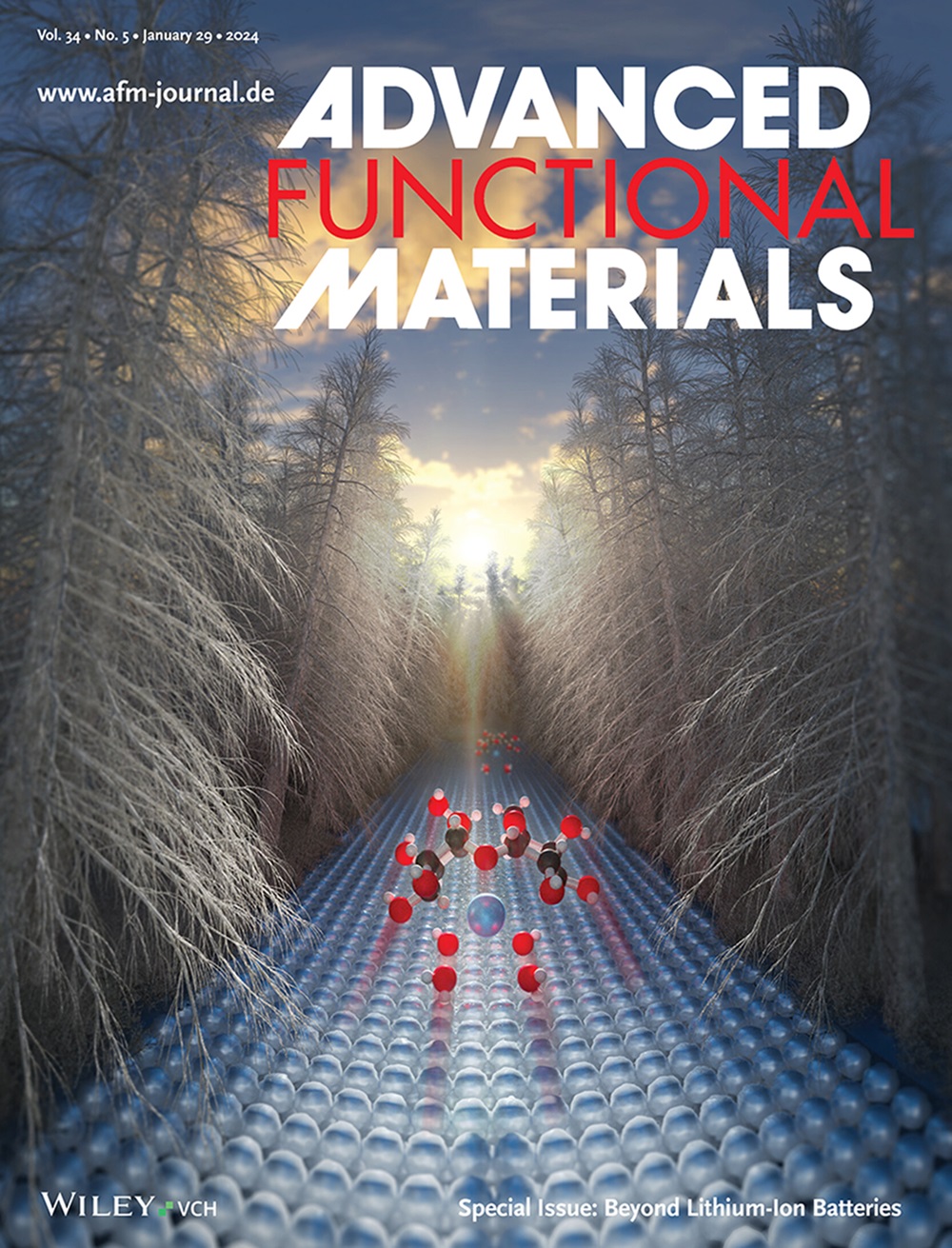植酸配位聚酰胺膜的静电相互作用工程用于高效锂提取
IF 18.5
1区 材料科学
Q1 CHEMISTRY, MULTIDISCIPLINARY
引用次数: 0
摘要
植酸盐(PhA)由于其高密度的远程静电吸引、可定制的电荷密度和优异的聚合物亲和性,在构建分子筛膜方面具有相当大的前景。本文提出了一种基于金属-有机磷双相界面配位反应的PhA‐Fe3+可控配位组装配合物,并利用PhA‐Fe3+配合物调节界面聚合(IP)过程生成聚酰胺(PA)纳滤膜。PhA - Fe3+配合物为胺单体提供了高密度的远程静电和短程氢键力,并通过灵活的金属-有机磷配位提供了可调的电荷密度。分子模拟表明,氢键和强静电相互作用在空间上丰富了胺单体,并在时间上减缓了它们向己烷相的扩散,从而导致PA/PhA‐Fe3+膜具有增加的表面积、增强的微孔隙度、更低的厚度、更高的孔附近水密度和纳米级斑点结构。这些结构被认为是实现19.2 L m−2 h−1 bar−1的水透性,以及96.7%的MgCl2截留率和24.1的Li+/Mg2+选择性(Mg2+/Li+质量比= 20)的关键因素,超过了报道的纳滤膜。这种PhA - Fe3+络合物调制的IP策略为构建用于从盐湖盐水中提取锂的高透膜提供了新的视角。本文章由计算机程序翻译,如有差异,请以英文原文为准。
An Electrostatic‐Interaction Engineering on Phytate‐Coordinated Polyamide Membranes for High‐Efficiency Lithium Extraction
Phytate (PhA) holds considerable promise for constructing molecular sieve membranes due to its high density of long‐range electrostatic attractions, customizable charge density, and excellent polymer affinity. Herein, PhA‐Fe3+ complexes constructed by controllable coordination assembly are presented, based on metal‐organophosphorus biphasic interfacial coordination reactions, and use the PhA‐Fe3+ complexes to regulate the interfacial polymerization (IP) process to generate polyamide (PA) nanofiltration membranes. The PhA‐Fe3+ complexes impart a high density of long‐range electrostatic and short‐range hydrogen bonding forces to the amine monomers and provide tunable charge densities through flexible metal‐organophosphate coordination. Hydrogen bonding and strong electrostatic interactions spatially enrich the amine monomers and temporally slow down their diffusion into the hexane phase, as demonstrated by molecular simulations, resulting in a PA/PhA‐Fe3+ membrane with increased surface area, enhanced microporosity, lower thickness, higher water density near pores, and nanoscale spotted structures. Those structures are recognized as the key factor in achieving a water permeance of 19.2 L m−2 h−1 bar−1 , alongside a MgCl2 rejection of 96.7% and a Li+ /Mg2+ selectivity of 24.1 (Mg2+ /Li+ mass ratio = 20), surpassing those of reported nanofiltration membranes. This PhA‐Fe3+ complexes‐modulated IP strategy offers fresh perspectives for constructing a highly permeable membrane for lithium extraction from salt lake brines.
求助全文
通过发布文献求助,成功后即可免费获取论文全文。
去求助
来源期刊

Advanced Functional Materials
工程技术-材料科学:综合
CiteScore
29.50
自引率
4.20%
发文量
2086
审稿时长
2.1 months
期刊介绍:
Firmly established as a top-tier materials science journal, Advanced Functional Materials reports breakthrough research in all aspects of materials science, including nanotechnology, chemistry, physics, and biology every week.
Advanced Functional Materials is known for its rapid and fair peer review, quality content, and high impact, making it the first choice of the international materials science community.
 求助内容:
求助内容: 应助结果提醒方式:
应助结果提醒方式:


